Mazda CX-5 review and buyer's guide
If you want one of the best-driving, most luxurious and surprisingly versatile five-seat SUVs in the market, there is officially no need to buy anything over-priced from Europe
The Mazda CX-5 is a refined, practical and timelessly elegant family SUV that drives beautifully and offers more than enough performance to make it highly appealing and an excellent value, upmarket daily drive.
Shopping for a CX-5 is a balancing act between features and price, with plenty of choice between economically-conscious low-tier Maxx or Maxx Sport and the snazzy, equipment-laden top tier GT SP or Akera. There are plenty of CX-5 variants in the rangeto find the sweet spot for both your budget and the equipment level you need.
But there is a new CX-5 on the horizon in the next 18 months or so, so get in soon to score yourself a bargain on what has been one of the most popular vehicle in Australia - for very good reason.
The engines are excellent, the interiors are properly premium, and the build quality is higher than anything the Germans or Chinese can manage. In that context, the pricing shouldn’t make your head spin because you get what you pay for, which is not something you can say about many retail products these days
The styling that Mazda committed CX-5 to 10 years ago remains contemporary; the vehicle is very practically laid out. Is it elegant? Somewhat, but that’s a pretty subjective determination. One thing, however: it’s not a case of form over function.
CX-5 is the embodiment of what a midsize SUV needs to be, in the context of typical Australian family motoring: school drop-offs, weekday commutes, weekend sports and various familial/friend commitments, school holiday trips, even a little bit of towing perhaps.
CX-5 is capable, pretty economical, and reliable as proven over 10 years of this platform’s in-service performance as one of Australia’s most popular vehicles. It’s practical enough to carry the kids and their stuff to and from various commitments, and everyone in it will find it comfortable enough, even on long trips.
In terms of family ownership, both parents will find themselves driving it confidently, too, thanks to good engines that offer enough grunt but plenty of refinement in the powertrain as well.
More than 23,000 Australians bought a CX-5 in 2023, and this vehicle was popular again in 2024 for a reason, to the tune of over 22,000 sales (beaten by Mitsubishi Outlander by just a handful of units and Toyota RAV4 by about double).
However, if you’re raising three kids who are all in that ‘child restraint’ window (from infancy to 7-8yo), consider the 7-seat Mazda CX-80, Kia Sorento or Hyundai Santa Fe (or possibly a Kia Carnival) - they’ll provide more room and seating configuration options for prams, additional adults, bikes, luggage, shopping, etc.
A NEW MAZDA CX-5 IS COMING IN 2026…
Mazda Australia is about to reveal the all-new CX-5 midsize SUV which will be its most popular model, most likely, for the next 10 years and the outgoing version has been since 2015.
Since the current model’s 2015 launch, at the time considered quite revolutionary in terms of offering ‘affordable luxury’ to mainstream SUV buyers, it has been a top 10 sales juggernaut. Every year, CX-5 has never sold fewer than 21,000 units, even during 2020 when the world shut down for COVID.
With a projected 2025 sales total of about 28,000 units, all up CX-5 will have sold over 250,000 units, having routinely put the sales pressure on Hyundai Tucson and Kia Sportage especially, just as those brands had gained their commercial feet in Australia.
Furthermore, this sleek, elegant CX-5 also meant Toyota RAV4, Mitsubishi Outlander and Subaru Forester were made to look somewhat fossil-like with their heavy use of dense plastics, blocky styling and lackluster engine choices.
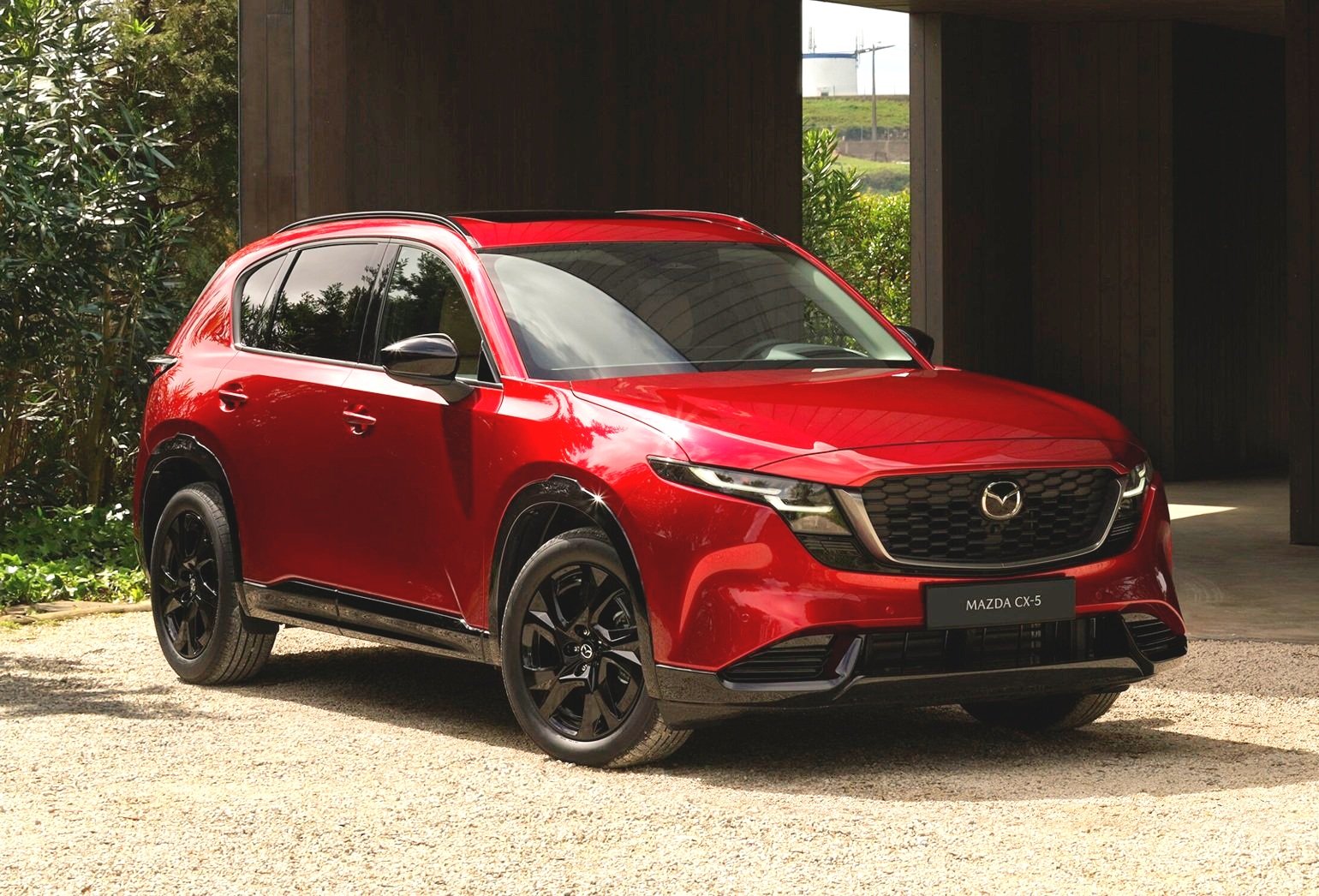
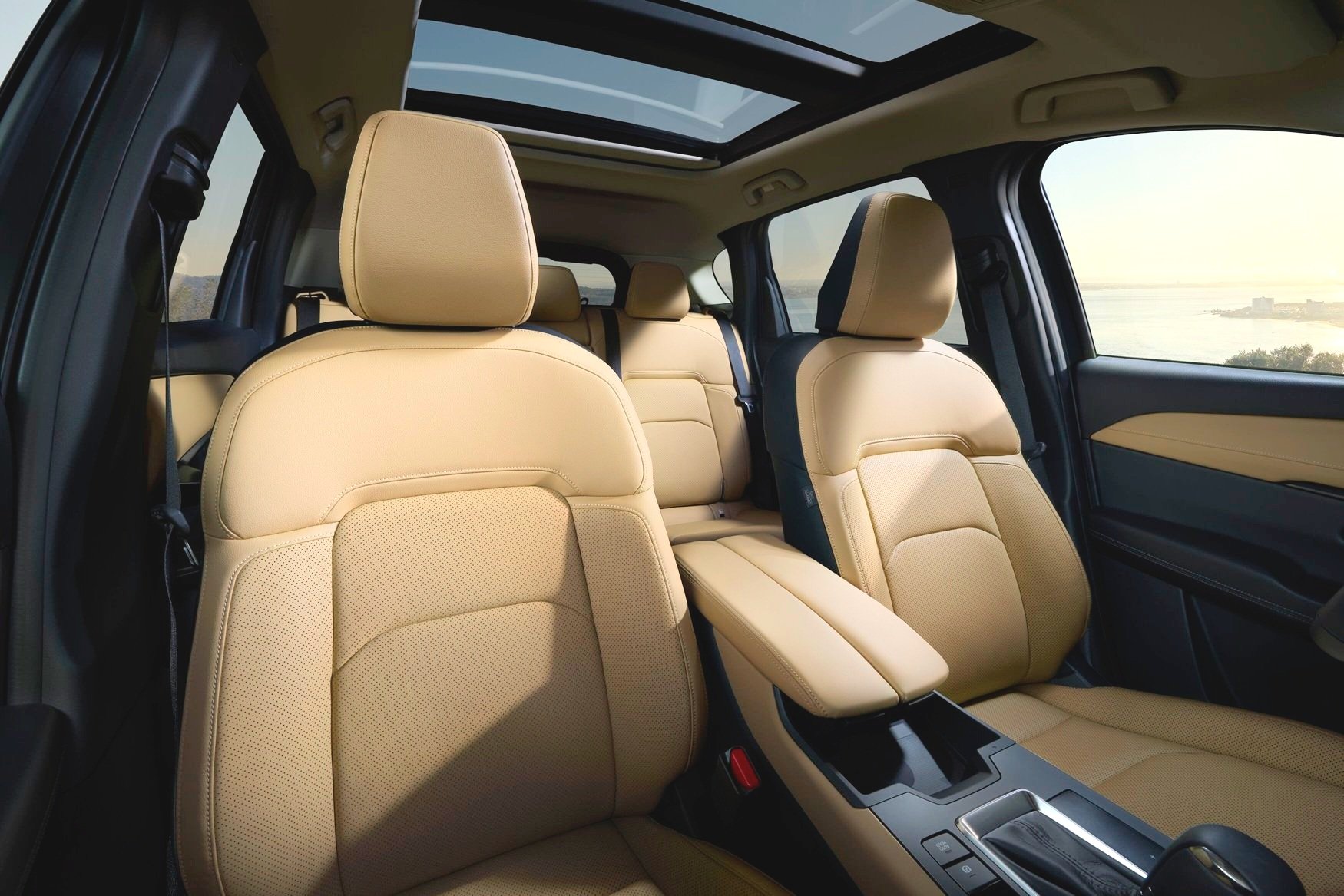
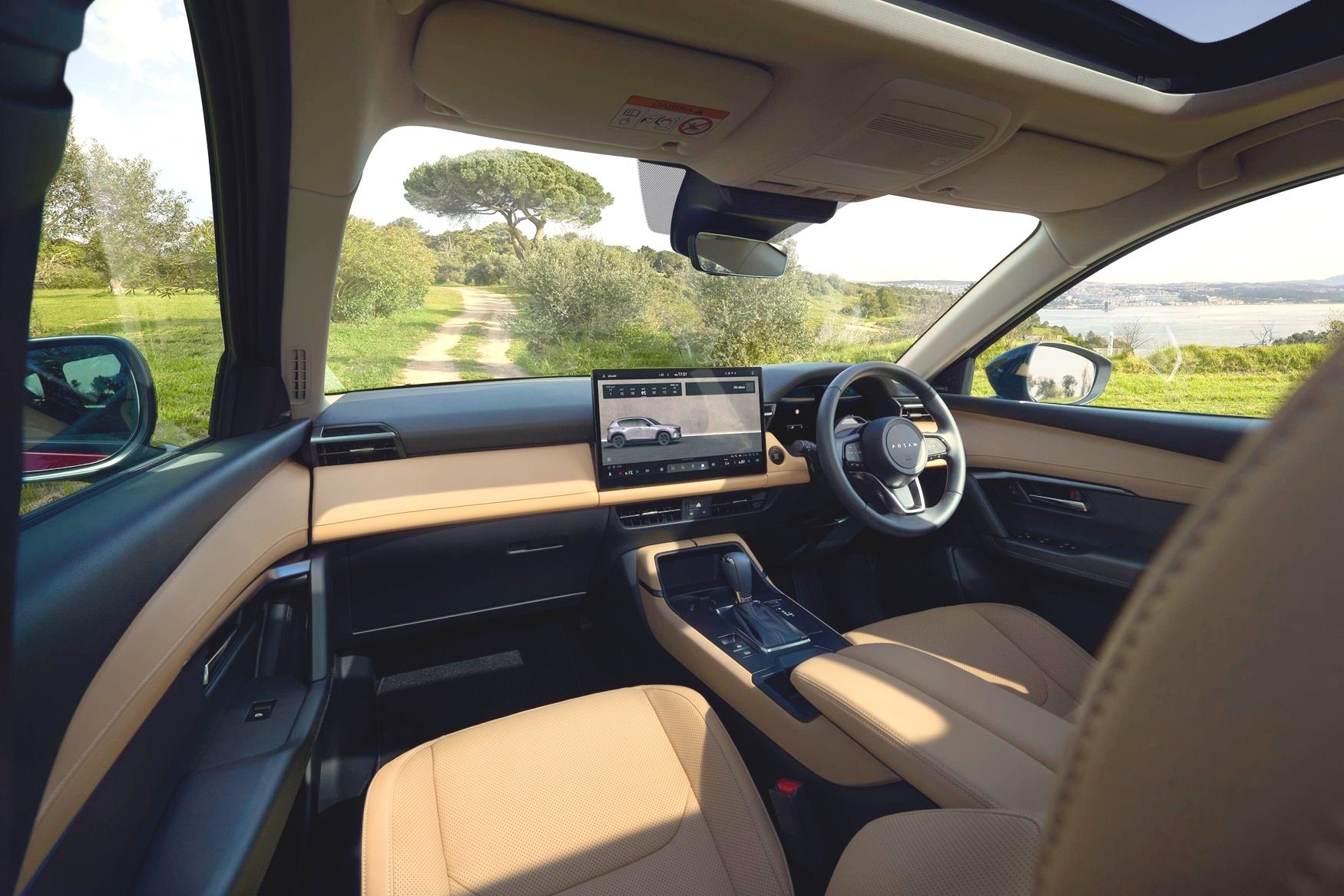
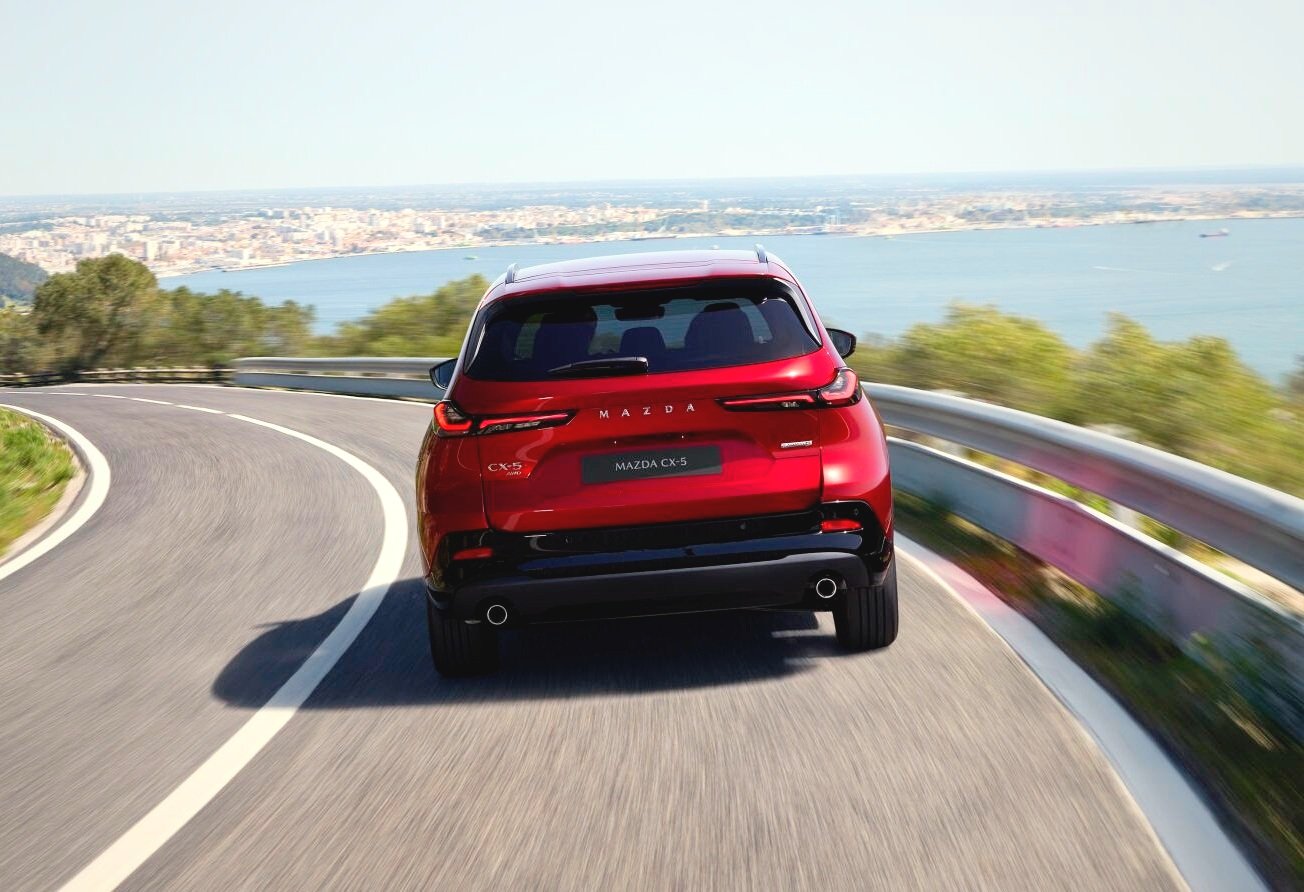
The supposedly “all-new” CX-5 will in fact retain the same 2.5-litre naturally aspirated 4-cylinder petrol engine it’s been using since 2015, but that’s not a bad thing.
In fact, it’s a good thing because this is a very popular powertrain, it’s been reliable, and all of the R&D has been done - there’s no on-road in-service lab-rat testing to be done when it rolls out in 2026.
Mazda hasn’t yet confirmed if the turbocharged version of that engine will return, but it’s most likely going to due to the fact it too has been the most desirable powertrain in the current CX-5. The one cause for concern in this regard is that the mainstream, established car industry has been in something of a race to cut costs and maximise profits in recent years, so reducing to a single powertrain would mean a significant reduction in ongoing overheads.
As for performance, it’s not a good story, unfortunately. Power in the outgoing non-turbo model is 140kW of peak power at 6000 revs and a healthy 252 Newton-metres of torque at 4000 revs. But the new version has been detuned to just 132kW and the same amount of torque.
We can deduct that the new CX-5 will be heavier thanks to a 2 per cent increase in external dimensions, from 4575mm long in the current version to 4690mm in the new one. The wheelbase is 115mm longer which means more structural material (and more weight), while both height and width increase a tiny 15mm respectively. This physical dimension change is a strong indicator (but not hard evidence) that weight has increased.
This probable weight increase means that in conjunction with the loss of power, the power-weight ratio will be worse, and in a heavier vehicle, this is a universal sign that the CX-5 will be slower, any towing aspiration will be reduced, and payload potential will be restricted.
Mazda has said nothing of interest about the 6-speed transmission, which should suggest it’s the same unit in the current model, so the idea of calling it “all-new” is misleading. It might be a new chassis with new sheetmetal and a new interior, but it’s not all-new.
What will be new is the promise of a hybrid powertrain, which (of course) has come very late to the party considering the RAV4, Hyundai Tucson and Kia Sportage, the Mitsubishi Outlander plug-in hybrid, the incoming Subaru Forester hybrid and of course the Haval H6 and the MG HS hybrid (along with a raft of additional promised Chinese hybrids from fledgling brands).
Other boxes the new CX-5 ticks is the massive infotainment touchscreen, a new steering wheel design to match the elegant, classy interior (Mazda’s forte these days), and the homerun exterior design.
There is a win here for cargo capacity in the boot with the slight increase in dimensions, where the floor is 50mm longer and with about 25mm of extra height. The boot’s aperture itself has also been made slightly taller and wider.
Mazda says the height of the boot floor where the boot’s aperture begins is 18mm lower, which can be both a blessing or a curse depending on your perspective.
Blessing in terms of not having to lift things as high and it makes for a more accessible seat for shorter kids or parents to use wit the tailgate open. Curse if you have lower back issues and are fairly tall whereby you have to reach further to pack bulky, heavy objects into the space.
FEATURES & PRICING
The CX-5 exists at a point where luxury and affordability intersect. It’s comfortable, civilised and special enough that the majority of normal people would climb in and find it beyond acceptable. There’s nothing about the top-spec Akera at $48-50k which a rational human being would find inferior or unacceptable in terms of quality or polish.
CX-5 costs roughly $7000 more than the smaller CX-3, but you’re actually getting substantially more vehicle for your money, which justifies the price premium. Growing families will be far better suited to a CX-5 than anything in the small SUV class (such as a Hyundai Kona, Kia Seltos or Subaru Crosstrek). This explains not just why the CX-5 is so popular, but why medium SUVs are booming in Australia.
CX-5 has a long 2700mm wheelbase, hence the superior leg room over a smaller SUV, which is ideal for anybody close or over six feet tall. But, if you’re a driver (someone who is interested in how a vehicle drives and behaves), then CX-5 comes in at 1682kg (kerb weight) and there’s a turbo petrol powertrain to suit your enthusiastic nerve. For that engine, you’re going to have to start your budgeting at about $52,000, for the GT variant.
CX-5 Maxx - petrol, naturally aspirated, petrol FWD auto $38,000 (approx. driveaway)
2.5-litre petrol engine (AWD only, +$5000 over FWD, N/A petrol)
Inside:
Driving:
Rear parking sensors, reversing camera
Blind spot monitoring, rear cross-traffic alert
LED auto headlights, halogen taillights
Adaptive cruise control, auto emergency braking (urban, up to 30km/h) forward & reverse
7-inch digital driver’s display
Push-button ignition
Driver attention alert, lane keeping and departure warning
Standard manual air-conditioning
Apple CarPlay/Android Auto, DAB+ digital radio
10.25-inch infotainment screen
Tyre pressure monitoring
Cloth seats, leather steering wheel
Manual front seat adjustment
Outside:
17-inch alloys (space-saver spare)
Electrically adjusted and folding door mirrors
Rain-sensing wipers
CX-5 Maxx Sport - petrol FWD $42,350 (approx. driveaway)
Inside:
Paddleshifters
Satnav
Dual-zone climate control
6-speaker stereo
Driving:
LED taillights
Auto-dimming rearview mirror
Cylinder deactivation, idle ignition stop-start
Outside:
17-inch charcoal alloys (space-saver spare)
CX-5 Touring - petrol FWD/AWD, naturally aspirated $46,600 (approx. driveaway)
Inside:
Heads-up display, traffic speed sign recognition
Synthetic suede seats
Wireless phone charging
Driving:
Front parking sensors (in addition to rear)
Heated door mirrors
Outside:
Proximity smart key
CX-5 GT SP - petrol, naturally aspirated, AWD: $52,170 (approx. driveaway) | add $2500 for turbo: $54,400 (approx. driveaway)
Inside:
Driving:
Adaptive front-lighting system (swivels based on steering input)
LED daytime running lights
Heated front seats (now leather) with power adjustment (plus driver lumbar)
BOSE 10-speaker premium sound system
Leather seats
Outside:
19-inch polished charcoal alloys
Sunroof
Electric tailgate (remote operated)
CX-5 Akera - petrol, naturally aspirated, AWD: $55,000
Inside:
LCD driver dash cluster screen
Frameless rearview mirror
Heated rear outboard seats
Heated steering wheel
Nappa leather seats
Ventilated (cooled) front seats
LED boot lighting
Driving:
Adaptive LED headlights
360-degree camera
Outside:
Body colours wheelarches, bumper and side skirt trims
You get then elect the ‘G35’ GT version which gives you the 2.5-turbo engine with AWD for $52,000
Or you can step back in price slightly with the G25 Akera for $53,200 but with the G25 (non-turbo engine) which gets:
‘Dark Russet’ Nappa leather seats
360° camera
Heated steering wheel
And finally if you want the ultimate iteration, there’s the G35 Akera at $55,200 to have the 2.5L turbo petrol engine with 170kW.
DRIVING
If you need a more budget-conscious CX-5, the Maxx, Maxx Sport and the Touring variants are going to be as far north as you’ll want to go in price.
That is the main drawback with CX-5: it does lots of great things, but it does get somewhat expensive the further up in the range you go, compared with competing vehicles in this segment.
The Maxx and Maxx Sport get Mazda 2-litre atmo petrol engine which is adequate for most families in ordinary driving - just don’t expect it to be something thrilling to drive out on the highway or on the backroads. It goes okay, returns good fuel economy and does the job.
That said, punting the range-topping 2.5 turbo engine along any kind of twisty road is a fairly inspiring experience. Especially for a family SUV.
There are three engines (see below): a 2.5 turbo, a 2.5 with conventional induction (non-turbo) and a 2.0 in the entry-level CX-5 Maxx. They’re all petrol engines - the diesel is no longer offered.
The turbo engine is awesome but expensive. The 2.5 non-turbo is more affordable, and punchy enough for most owners. But the 2.0 is there as a price leader only, and is, as such, a bit of a disappointment operationally.
CX-5 has the longest wheelbase of the main competitors at exactly 2.7m, which makes it quite large inside (because wheelbase generally dictates cabin space). This is also excellent for ride quality (longer wheelbases ride better) and high-speed stability. In fact, the rear wheels almost look like they’re right under the rear bumper - so Mazda’s engineers have made a real effort to jam as much wheelbase in as possible. This makes it slot nicely into most carparks with relative ease.
In traffic, both 2.5-litre versions of the CX-5 are quite quick off the line (for a family SUV). Freeway on-ramps, where you have a chance of giving the throttle a good squeeze, are actually fun when you feel it kick down, snarl and shoot you up to the ambient traffic speed, for merging.
Overtaking with the turbo petrol engine is quick. You can actually drive the CX-5 turbo with some conviction.
In general terms, the 2.5 turbo is ahead of most competitors, while the 2.5 atmo engine is line ball with (for example) the 1.6 turbo engine in Hyundai Tucson and Kia Sportage. Of course, the 1.6 turbo has a dual-clutch transmission, which is not as nice or refined in traffic as Mazda’s conventional auto.
Looking for a hybrid? Mazda’s hybrid CX-5 is years away, so your only option in this regard is the Toyota RAV4 which you can study here >> Or the Kia Sportage hybrid.
Bottom line: the CX-5 is a much nicer vehicle to drive, it rides better, it turns corners better, the brakes are better and the 2.5-turbo brains a RAV4 under acceleration.
Pro
It’s the classiest and most premium mid-size SUV in the ‘mainstream’ domain
2.5-litre petrol turbo four-cylinder is reliable and delivers good performance
Back seats are very comfortable
Tyre pressure monitoring standard across the range
1.8-tonne braked towing capacity + 11m turning circle
Finally Mazda catches up with the world and includes Apple CarPlay & Android Auto standard
Five-star ANCAP safety rating; strong crash performance
Decent boot space at 442L (rear seats up)
Nappa leather (Akera) is very classy
Con
It’s pricey. CX-5, like its bigger sister CX-9, is comparatively expensive in every model grade
Space saver spare wheel and tyre limits you to 80km/h when you get a flat. (Hardly luxurious, 200km from home)
360 degree monitor needs work, obscures vehicle’s corners (the most important bit of visual information you need when reversing)
Extensive model range can be confusing
Diesel engine not available anymore
I-stop stop/start ignition is annoying on two levels: 1. It’s standard; 2. it defaults to on every time you start the car afresh
I'll help you save thousands on a Mazda CX-5
Just fill in this form.
No more car dealership rip-offs
Greater transparency
Less stress
ENGINE
Mazda calls its engines ‘SkyActiv’, which is just marketing speak for: they’ve put a lot of engineering work into them.
There are three engines in the range, all of which are petrol. (Mazda no longer offers the 2.2-litre diesel, sadly.)
There’s a 2.0-litre petrol four-cylinder which is naturally aspirated, offering reasonable power of 115kW @ 6000rpm and torque 200Nm @ 4000rpm which is good enough for those shopping in the budget aisle for a front-wheel drive only CX-5 with a good boot, great safety and adequate performance.
This entry-level engine and drivetrain configuration, essentially, means the CX-5 Maxx 2.0-litre is just like a front-drive car, only bigger.
If you want more performance or you need on-demand AWD (which is better in slippery conditions), you’ll need to step up to the 2.5-litre four-cylinder (non-turbo) SkyActiv powerplant in the Maxx Sport (second tier). This is quite a capable package, without being particularly inspiring to drive. You’ll get a 21 per cent increase in power (140kW). This is good if you like to get up to speed somewhat quickly, or you want extra grunt to overtake, or you simply have lots of stuff constantly filling up the boot, you go places with the kids routinely etc., this is probably the ideal ‘all rounder’ engine.
The 2.5 is good in the sense that it has also proven pretty reliable in service for several years now.
But if you want the most potent performance in the range, choose the turbocharged 2.5 version available in the GT and Akera, which makes 170kW at 5000rpm.
All engines run on regular 91 octane petrol - which is excellent for the budget, long-term.
TRANSMISSION
This is probably the easiest part of the CX-5 range to understand: There’s one transmission available.
You get a conventional six-speed auto transmission which is well calibrated to each of the engines in the range. Mazda has chosen to make a really smooth-shifting, intuitive transmission.; It’s helpful that Mazda doesn’t make you deliberate further when you change FWD to AWD, or engine, or even when you pick the top-shelf model. It’s the same transmission.
Other brands offer dual clutch transmissions (DCTs) and continuously variable transmissions (CVTs). Both are notionally fuel-savers, but while DCTs shift very positively in performance driving scenarios they tend to be comparatively unrefined in traffic. CVTs are the best on fuel, but they drone incessantly, react slowly, and tend to feel like a rubber band between the engine and the wheels.
What is noticeably unrefined is Mazda’s i-Stop engine stop/start system which, like virtually every other system of its kind, jolts the car upon restart at the lights or when turning out of an intersection. It does re-activate the engine pretty quickly, which is good, but it spoils the whole otherwise refined drivetrain experience. And, while you can turn it off manually, it defaults to ‘active’ every single time you start the car, which is a bit ‘Groundhog Day’…
Safety
Once again the ANCAP rating system proves confusing for ordinary people to understand, but remains important for you to be aware of. The year in which the tests were done really matters.
The CX-5 was tested by ANCAP way back in 2017 and scored 95 per cent for adult occupant protection - the important set of tests that represent being in an actual crash. That was - and is - pretty good, but those test protocols were not as stringent as the more recent ones.
In other words, a vehicle with a lower score, but tested in (say) 2023 or 2024 might actually be safer. It’s virtually impossible to tell.
ANCAP ratings expire these days, and CX-5’s expired in December 2023. It is officially unrated by ANCAP today. There’s no word, apparently, on why ANCAP has not re-tested this very popular vehicle in the interests of public safety.
See CX-5’s technical report here >>
It is, however, reasonable to say that CX-5 remains a very safe vehicle, so don’t sweat it too much.
Some points to consider on CX-5 include the blind-spot detection system which picks up vehicles well out of the danger zone one would normally associate with being too close to merge, or change lanes. About 1.5 vehicle lengths in front of the car behind is a pretty safe margin, but the CX-5 seems to beep at about 2 to 2.5 car lengths, which seems a bit excessive.
According to ANCAP’s report, the “The standard-fit autonomous emergency braking (AEB) system performed well in tests of its effectiveness at highway speeds, with all collisions avoided or mitigated".
Except that statement is misleading and makes you think all is perfect, when in fact it’s not. At 45km/h the AEB system managed to reduce the vehicle’s speed to 16km/h as it detected a child pedestrian stepping out from behind parked cars on the right-hand side…
The dummy was still hit doing 16km/h and certainly, the AEB system mitigated the crash to be less severe by reducing speed significantly, which is a warning to anybody thinking they can buy all the collision avoidance features and switch off behind the wheel. A Subaru Forester in the same test passed without hitting the dummy.
In any case, these systems are not a substitute for you, the driver, remaining vigilant.
MAIN COMPETITORS
Not convinced about a CX-5? Here’s an executive summary of the main competitors.
Toyota RAV4 Edge: from $52,333 before on-road costs:
A popular all-rounder from the country’s top-selling car brand. (Toyota is still experiencing massive delays on some models so don’t be surprised to learn that ‘your’ RAV4 is 12 months away.
RAV4s are good enough (just). As market leader, Toyota does the minimum required to stay on top, and this is reflected in the vehicles. They are, however, typically reliable, and the resale value is high.
Hyundai Tuscon Highlander: from $50,619 driveaway:
Possibly the best value mainstream mid-size SUV. It is basically the same vehicle as a Sportage, with different styling.
The Hyundai/Kia 2.0L diesel is unbelievably good for light towing up to two tonnes (just watch the towball download limit of 100kg). You get great mid-range power and superb long-distance fuel economy (quoted at 6.4L/100km on the combined laboratory bench test cycle). Decent fuel tank at 62L, good payload and full-size spare wheel (which beats CX-5 for regional use in particular).
Highlander spec does give you all the safety gear, from adaptive cruise to auto emergency braking etc. Hyundai’s customer care is slightly better than Mazda’s, if something goes wrong.
Kia Sportage GT-Line: $54,990 driveaway:
Not quite as smooth as the CX-5 in petrol form, but the diesel is sublime. (Everything above for Tucson, pertains to Sportage as they’re essentially the same vehicle.)
Kia’s 2.0-litre turbocharged diesel is a masterpiece in urban environments, especially compared with the 1.6 turbo-petrol with dual-clutch transmission.
Diesel comes with lockable all-wheel-drive, 1900kg towing capacity (1.6 petrol - 1500kg). On the road it’s really well sorted out, dynamically, it’s well damped and agile when you’re on the move without feeling bulky and cumbersome. That’s the local suspension tuning that Kia does - it’s a real point of difference versus Tucson.
Sportage GT Line is expensive, compared with its more affordable sub-variants, but you get trimmings: 19-inch alloys (with matching spare), proxy key, flat-bottom steering wheel with paddle-shift, front powered seats, bi-xenon lights, LED foglamps, powered tailgate, wireless phone charging, all the collision avoidance gear (incl adaptive cruise) and auto parking.
A strong on-road all-rounder with lots to offer, excellent customer service and loads of standard equipment. Plus, Kia offers a 7yr warranty.
Subaru Forester 2.5i-S: from $47,966 driveaway:
Go almost anywhere, take plenty with you.
Undoubtedly Forester is the most soft-roading SUV. Next step up for the rough stuff involves a low-range gearbox, locking differentials and talking about breakover angles.
Forester’s X-Mode, combined with Subaru’s renowned symmetrical all-wheel drive is excellent for light to moderate conditions like wet compacted sand, dirt and gravel tracks, traipsing up and down slippery slopes and heading up to the snow without chains (but definitely with an air compressor) aboard.
Forester also offers the best ride height: 220mm. Plus, superb ergonomics, and 498 litres of luggage space.
A full-size spare treats your safety with greater respect in the boonies. Subaru’s CVT drones a bit, but it is one of the better-implemented CVTs around. If you’re the regular camping type, Forester is a hot contender.
A hybrid is available, but it’s a bit of a joke, frankly.
Mitsubishi Outlander Exceed: from $52,000 driveaway:
Respectable in almost every sense, except where aesthetics are concerned. That face... Still, you can’t see it when you drive.
If you want practicality in spades, the only seven-seater in this group is the Outlander. (It is pretty cramped back there, however.)
If you can’t stomach (nor afford) to push $60k for a bigger seven-seat SUV like Santa Fe, Sorento, or CX-9 (or you’re having kid #4 where a Kia Carnival is more appropriate) then Outlander Exceed with an occasional-use third row is a clever choice.
You get a 2.5L atmo petrol engine, 8sp CVT with paddle-shift, good equipment levels including entertainment and safety systems, adaptive cruise, auto emergency braking and the rest, plus pretty good boot space at 477L (third row down). Plus there’s five extra years of warranty (total of 10) if you get the car serviced on time at a Mitsubishi dealer.
DON’T BUY:
Jeep Cherokee Trailhawk: from $50,000-$54,400k before on-road costs:
Dead sexy, understandably desirable, but don’t do this to yourself - they’re notoriously unreliable.
Jeep and its parent company Stellantis Australia are infamous for making up every excuse in the book for not treating customers with basic decency.
Jeep does have a solid reputation for off-road capability and the Trailhawk gets tough off-road suspension, a mechanically lockable rear differential with low-range gearset, and a terrain management system with rock-climbing mode, two hyper-masculine tow hooks up-front, plus a wading depth of 480mm (with extra water sealing).
And the 3.2L Pentastar V6 offers a heady 200kW and 315Nm of torque which Jeep claims will haul up to 2.2 tonnes. Shame about the properly poor customer service you’ll receive (on the balance of probability) when something goes ping. Expensive servicing costs and park brake derived from early portable barbecues and shopping trolleys is stereotypically American. If only they could get their act together - because what Jeep stands for is great, and a Trailhawk is cool. Just, no: Don’t do it.
German prestige
The gravitational pull of the German prestige SUV is hard to ignore. But, objectively, it’s hard to justify.
Audi Q5:
from $73,000 to $114,000 before ORC
Diesel 2.0L: 140kW / 400Nm (power-to-weight: 69.5 kW/t)
3.0 diesel 210kW / 620Nm /
petrol: 185kW / 370NmBoot space: 550L / 1550L
Length: 4.66m Wheelbase: 2.8m
Towing capacity (braked): 2000kg
Lane-keeping assist, adaptive cruise control, parking sensors, rear-view camera, rear cross-traffic alert, cyclist alert all standard
Forward/reverse autonomous emergency braking
Tri-zone climate (in a five-seater)
Fuel: premium 95RON or higher (petrol 45 TFSI)
360-degree camera (optional) $884
Cargo rails $350
Panoramic sunroof $2400
Metallic+pearl paint $1530
Heated, folding door mirrors; electric front seats w memory (comfort package $2500)
Heads-up display (tecknik package $2500 incl paddle shift, 8.3in display)
8 speaker stereo: (Bang & Olufsen 3D Sound System, 19 speakers optional)
Mazda CX-5 Akera:
$60k driveaway
Diesel: 140kW / 252Nm | turbo-petrol: 140kW / 450Nm (power-to-weight: 98.8 kW/t)
Boot space: 442L / 1342L
Length: 4.55m Wheelbase: 2.7m
Towing capacity (braked): 2000kg
Lane-keeping assist, adaptive cruise control, parking sensors, rear-view camera, rear cross-traffic alert, cyclist alert all standard
Forward/reverse autonomous emergency braking
Dual-zone climate for five-seater
360-degree camera
Fuel: 91RON unleaded
Metallic+pearl paint $495
Heated (and cooled) seats front driver & passenger, heated steering wheel
Heads-up display
Sunroof
Heated, folding door mirrors; electric front seats w memory
Auto, adaptive LED headlights
10 speaker Bose stereo
DRAWBACKS
The MZD Connect and rotary dial might prove fiddly and be distracting to use while driving, for some. But once you adapt to it, it can actually reduce your temptation to take your eyes off the road by having to get your finger on the right spot on some laggy touchscreen.
CX-5 is a bit pricey in this set, topping out just under $60K. Like its bigger sister the CX-9, it’s pricey in every model grade, but at least you’re more-or-less getting what you pay for. Turbocharged petrol engines and on-demand AWD, plus the interior trappings, all cost money - especially if you implement them properly.
Tolerating a space saver spare wheel with its 80km/h speed limitation is painful, especially if you are a long way from home when you get a flat tyre.
The 360 degree camera monitor needs work because it obscures vehicle’s corners (the most important bit of visual information you need when reversing).
One could also argue five model grades is too many; four at most would suffice considering they’ve dropped the 2.2 diesel engine now. CX-5 is only available as an AWD from second-tier Maxx Sport up and with only the 2-litre or 2.5 atmo/turbo to choose from. So, on these fundamentals, they could perhaps make the range simpler.
The i-stop stop/start ignition system is annoying on two levels: 1. It’s unrefined and doesn’t save much fuel, and 2. it defaults to on every time you start the car afresh. You have to disable it manually every time.
CONCLUSION
The Mazda CX-5 does so many things right it’s hard to justify the existence of actual “luxury” brands - except if you want to spend more than $120k. In other words, I’m saying a cheap prestige SUV isn’t going to be as good as the most expensive CX-5.
CX-5 puts all the comforts of modern motoring within conceivable reach of mainstream mortals like us, basically. (A BMW badge still looks better than Mazda’s seagull in a chrome hoop.)
CX-5 certainly puts style and plushness before ruggedness and dirt-road prowess, but for the majority of the car-buying public, that’s exactly what you need - and the sales results prove that. These things aren’t mainly soft-roaders, they’re de facto family wagons.
CX-5 isn’t perfect, and certainly things like the 360-degree camera and the space-saver spare need rethinking, but that top-spec Akera remains a very compelling proposition - if you have the cash.
In the middle of the range, with the 2.5 atmo engine, is where you’ll find the real mainstream value. (The 2.0 Maxx is really just a price-leader.)
With CX-5, you’re getting a brand with historically good customer support at the dealership level too, and Mazda definitely takes pride in the design and engineering of its vehicles.
When it’s all said and done, you can stand back and think, “Yeah, it is better-looking than the RAV4, and I didn’t have to spend BMW money”. So that’s nice.
MORE ON MAZDA CX-5
Why you should buy a CX-5 right now
The Mazda CX-5 is getting on a bit, which is evident by the consistent updates and relentless price increases over the last couple of years.
This is a pretty clear sign that the current generation that started life in 2015, is due for renewal, most likely in 2024. Check out the recent Cars to Buy Before Christmas 2023 List >>
Mazda has made many attempts to keep the rather lovely-looking CX-5 shape looking fresh and for the most part it's worked. But eight years is a long product lifecycle and there's plenty of interesting innovation going on at Mazda which is promising for the next chapter in their midsize SUV.
Outgoing CX-5 will be in runout for the next three to six months, and the last AutoExpert inventory check found an abundance of stock scattered across the states. We’re talking about 90 in Queensland, 38 in NSW and over 180 in Victoria as of mid-November. But the nature of CX-5 is that its popularity will see stock gobbled up quickly.
By the end of 2023, don’t be surprised if Mazda totals 30,000 CX-5 sales; it’s currently on 19,000 in a solid third place behind Mitsubishi Outlander on 20,000 units, and Toyota RAV4 with 25,000.
What’s impressive about this CX-5 platform is that it’s been so enduring. It’s quite unusual for a platform to last over 10 years while also remaining increasingly popular over that time. CX-5 came about as SUVs were increasing at the demise of the large and medium sedan. But the way aging models generally become tired and run out of ways to make the product interesting and appealing, Mazda managed to do the opposite with CX-5 - it just kept getting better.
They kept refreshing the CX-5 in a way that not only kept the sparkle, but made it shine brighter. Mazda added graphite and charcoal alloys, they did an SP version which added a drop of gangster into the CX-5 coffee, they gave it the turbocharging treatment. And there was a bunch of desirable features available in mid-range models that made it good value to go up the range without maxing out the credit card by going for the top-spec Akera.
And then there’s the paint palette. Soul Crystal Red was an inspired premium paint that makes notionally prestige vehicles from premium brands look like poverty packs. You can visibly see flecks of gold; it sparkles in certain lighting situations, and together with those graphite alloys, the whole car pops in both the marketing material and in real life. It’s the kind of paint you expect to see on six-figure hot rod showcars.
In fact, Mazda developed a new painting technique using this colour, which reduced carbon emissions by 17 per cent and organic compounds by nearly 80 per cent, and they developed a new robot for painting it.
Mazda has dropped the 2.2-litre diesel powertrain option from the CX-5 for 2024, which means however many units are out there in dealerships right now are probably the last ones. CX-5 diesel is an excellent option for towing >>
This engine, it’s not unfair to suggest, is to Mazda what the song I Was Only 19 by Redgum is to Vietnam veterans when they drive past the Puckapunyal Army Base - a fitting tribute with an emotional kick in the guts. See, although this engine had som oil dilution problems in its early life, Mazda got them fixed as I understand it, and it has remained a completely uncelebrated powertrain.
It is gutsy with 140kW of peak power available nice and low in the rev range, at around 2000 RPM. Not only does it have a notional braked towing capacity of 2000kg (with 150kg download on the towball) and the stability of AWD, it’ll return fuel economy of 5.7 litres per 100km, which is 22 per cent better than the petrol equivalent.
But don’t think for a moment that Mazda’s getting rid of this engine because it’s not interested in diesel engines… See the recent Mazda CX-60 review >> for more on luxury, grunty diesel SUVs.
It’s because of sales that overwhelmingly prefer the petrol versions (either the turbocharged 2.5 or atmo) to the diesel. Weirdly, it’s been a complete mirror-reversed situation of the 2.2-diesel sales Hyundai and Kia have experienced with Santa Fe and Sorento over the years, where it has been the dominant engine choice for its seven-seat SUVs over the old 3.5L V6 petrol.
So anyway, CX-5 sales have been outrageously successful in petrol form. Since this platform arrived in 2012, it’s sold over 275,000 units over 12 years, according to data supplied by Mazda Australia. That’s an average of 22,900 units every year. But only 4 per cent have been diesels, and it makes commercial sense to drop that powertrain option when you’re only selling one diesel to 1000 petrol versions. This is due to the cost the carmaker incurs getting that vehicle’s parts inventory on-shore, the cost to the dealer holding it, and the loss of value on that vehicle as it sits there not selling.
But if you can get your hands on one of the 60-odd units Mazda sells per month, before they’re gone completely, it’s an underappreciated powertrain that is smooth, full of low-down grunt and frugal.
INNOVATION ADDS APPEAL
When a brand makes a product people want, it succeeds, generally speaking. What Mazda has done over the last 10 years is turn their cars from being just another mainstream, reliable but bland Japanese mass-produced consumer item into something aspirational.
What’s made the CX-5 so breathtakingly appealing as a modern family transport is that they decided, long ago, that sitting around waiting for the world to buy their boring cars wasn’t going to be a viable commercial option. So they chose instead to innovate in the complete opposite way that Honda was not. In much the same way Hyundai and Kia have done the same.
Mazda chose to make their interiors truly stunning places to sit in, for their pricetag. These were mainstream, ordinary, family vehicles that felt like they were one or two steps removed from being a Mercedes. The CX-5 was one of their two primary affordable-luxury lures they used to reel in customers from the likes of Nissan, Honda, Ford and the bland factory we know and love as Toyota. CX-9 was the other beckoning finger, dancing slowly in the moonlight.
Even today, you look at the front of a CX-5 Akera and it still gets you in the amygdala. As a thing to look at every day, it has lines and shapes that even sketch artists at Alfa Romeo would agree have a timeless quality to them. It’s a very good-looking SUV, and that description is supposed to be an oxymoron.
The fact you can cram well over 400 litres of stuff in the boot, there’s excellent legroom courtesy of a 2.7-metre wheelbase, and the cockpit layout which is surprisingly ergonomic, all adds to the huge appeal of this vehicle.
Just the leather seats alone are so beautifully finished, either in white, black or walnut colour depending on the variant you get. The seat itself feels uncanny in the way it hugs without stifling you. The supple upper door trims, the soft-touch dash leather, the plush but not impractically over-the-top carpets are all at a high standard for a five-figure SUV.
They added just the right amount of techy features like heads-up display, adaptive cruise control, speed sign detection and powered seats, without overtly pushing weird things like Subaru did with driver monitoring where a red dot stares at you and accuses you of taking your eyes off the road just because you look 45 degrees out your side window.
CX-5 has Mazda’s MZD Connect infotainment system which, despite being criticised in the beginning as some awkward refusal to adopt touchscreens, turned out to be something of a prophetic vision now that carmakers are slowly trying to roll back their obsession with forcing all button-related functions into the LCD screens. Mazda’s system actually improves hand-eye coordination because you can navigate the screen’s various icons without actually having to star at the screen or randomly stab the screen with your finger.
Mazda’s rotary dial cycles through the various icons quickly and in a linear fashion that is simple to the driver who is already dealing with a potentially hazardous or demanding environment outside the vehicle. The dial provides haptic feedback, so you can feel tiny notches as you rotate it, and this tells your brain you’re X-many increments away from the menu or feature you wish to select.
Much like a video game, once you get it down, it becomes second nature and a wonderfully low-bandwidth system to use, perfect for the modern driving demands of most family car buyers. You might even say Mazda chose to keep touchscreens just beyond arms reach of the driver, encouraging you to perform simple tasks, or organise the vehicle before setting off, and reduce the temptation for drivers to allow themselves to be distracted. If you don’t buy the chocolate, you can’t gorge on it.
HOW MAZDA MADE LUXURY MAINSTREAM
The fact Mazda turned its most mass-produced vehicle into a premium product is a bit like what JBL did for affordable miniature music speakers, or what Blackberry did to the mobile phone.
Mazda put into a $30,000-50,000 five-seat SUV features that people 15 or 20 years ago would’ve only associated with the specialist, premium brands. They put Bose speakers - lots of them - including an amplifier, into a car designed for soccer mums. They picked up the tired old trope of wood interior trim being only for Jaguars and put it on their higher-end managerial dad-mobile. Subaru reckons they’re the family adventure car brand, except in a hot-climate Australia they only put ventilated/cooled seats into the latest Outback just two years ago - Mazda did it with the CX-5 back in 2017.
The CX-5 not only blazed a path for other rival brands to follow or die in terms of offering better quality to ordinary consumers, it tore down the conventions established by the German prestige sideshow. Premium cars were expensive because they had all the toys, and they drove beautifully, and they were supremely comfortable, and they became caged animals when you put your foot down to have a proper go at the corners.
Now, even though the CX-5 has nothing on anything like an M3 or AMG Merc, the point is that 2.5-litre turbo-petrol four-banger was a wolf in sheep’s clothing. A healthy surge of boost would hurl you down a freeway on-ramp or help you gallop your way around vehicle when overtaking, or you could simply power out of a slow mountain road corner with relative ease.
The naturally aspirated 2.5 was okay, but stuck to the quite-comfortable side of the ledger, which was all it was ever expected to do as the more affordable model grades appealed to the more mundane family transport runaround duties. But this is the broad appeal of CX-5 - it could do everything.
You had the poverty pack for fleets and low-incomed tight-budget buyers, you had the alternate torque diesel, and you had the aspirational, within-reach luxury option at the top of the tree.
In an era when carmakers have stripped consumers of choice, especially in powertrains where you pay more for heavier variants with the same powertrain, or where they’ve done the opposite and completely overwhelmed them with too many variants and a bedazzling array of features, Mazda managed to pat their head and rub their belly.
While Subaru lost its rally-borne excitement to Toyota, where Ford and Holden crumbled and failed to sell water in the desert (midsize SUVs in Australia), and as Nissan got embroiled in a quality decline at the same time as Honda struggled to recover post-GFC and gave up trying to innovate, Mazda doubled-down. Their main competition has been Toyota, Hyunda and Kia, with Mitsubishi playing the thorn-in-side role.
WHAT MAZDA GOT WRONG ABOUT CX-5
At the risk of sounding like a Mazda suck-piece, there really wasn’t much Mazda stuffed up with the CX-5, but it certainly wasn’t perfect. So let’s air that laundry so you can trust you’re making a wise purchasing decision here.
Firstly, the lack of a full-size spare wheel and tyre is a let down particularly in the Australian market where cities are at great distances and regional tyre shops are often closed on weekends, after hours, or sometimes just don’t stock the rubber for a city SUV on 19-inch rubber.
There are three reasons a carmaker uses a space-saver spare. One is cost: they’re cheaper. Second is space: they’re smaller. Third is weight: they’re lighter.
Having said that, the consolation is that the majority of owners are metro-dwellers anyway. But that doesn’t help you when the boot is fully loaded coming back from holiday and it’s pouring with rain on the freeway and you have to get home in the dark running on a skinny temporary spare. Murphy’s Law works like this: If you’re going to get a flat, it’ll be in these adverse, potentially treacherous conditions when you have to fit the space-saver. And it’s under the boot floor, beneath tents, clothing, toys and the cooking gear.
This brings us to the next primary problem with CX-5, the on-demand all-wheel drive system. It’s reactionary, meaning the computer needs to detect wheelspin before diverting drive to the rear wheels to assist the fronts. This also means that your AWD CX-5 predominantly runs in front-wheel drive anyway, even though you paid extra to have AWD.
In Mazda’s defense here, an on-demand AWD system required fewer parts and is less complex than, say, a permanent AWD drivetrain like in a Subaru or like the active AWD system in a Kia Sportage or Hyundai Tucson. Further to the CX-5 compliment however is this: in a suburban, city environment, where the roads are sealed and you’re mostly taking off from the lights gently, you don’t really need AWD anyway. And those full-time AWDs require more costly maintenance over time.
So even if you do like to venture off the sealed roads and onto some good quality gravel tracks over school holidays, you’ll still get use out of your on-demand AWD CX-5, but it will be much better suited to your more regular Monday-to-Friday office commute, which is most likely going to be your 90-percent usage case.
And the third thing Mazda might’ve done differently in a different dimension is the whole cylinder deactivation and ignition stop-start system they had a crack at, called i-stop. Sure, the system got much more refined as they improved it through model updates over the years, but it saved bugger all fuel and only served to add additional wear to the starter battery, while simultaneously ruining the otherwise sublime driving experience.
One more thing they probably could’ve left on the cutting room floor was the so-called lockable AWD function. They tried to copy Kia Sportage by making it possible to keep the AWD system engaged. It was only introduced on higher-spec versions, but it was also pretty redundant because nobody really buys a CX-5 because they’re a member of the blue singlet brigade and have any intention of taking their family Mazda SUV onto the beach or up gnarly dirt tracks.
CX-5 buyers are the exact opposite of that. They want civility and sophistication, not lifting wheels and redirecting tractive effort. They’d prefer a chilled centre console or a fold-out laptop table in the back seats, or even a Mazda-branded umbrella would go down a treat. Thicker carpets? It didn’t make sense. But anyway, it happened.
With the all-new CX-5 still a bit of a mystery in terms of its official arrival, the greatest likelihood is 2024. Recently price increases on the CX-5 this year are a good indicator that the 12-year-old platform is well and truly overdue for replacement (at least compared with the industry norm).
Getting yourself one of the CX-5s in stock right now is going to be the best way to kerb any further price increases that are a high possibility over the Christmas period into the new year. Carmakers like to offer discounts before Christmas to incentivise you before putting regular prices up again while everybody’s distracted by fireworks and getting sunburnt.
The Mazda CX-5 has been a brilliant vehicle not only for kicking the car industry into offering better quality and nicer vehicles to own and drive, it’s also been a high value family transport for consumers who need that little bit of spice in their otherwise exhausting and stressful life. Having a comfy place to plonk one’s arse is half that battle won, which Mazda CX-5 handles with panache and dignity.
More reports
Have your say




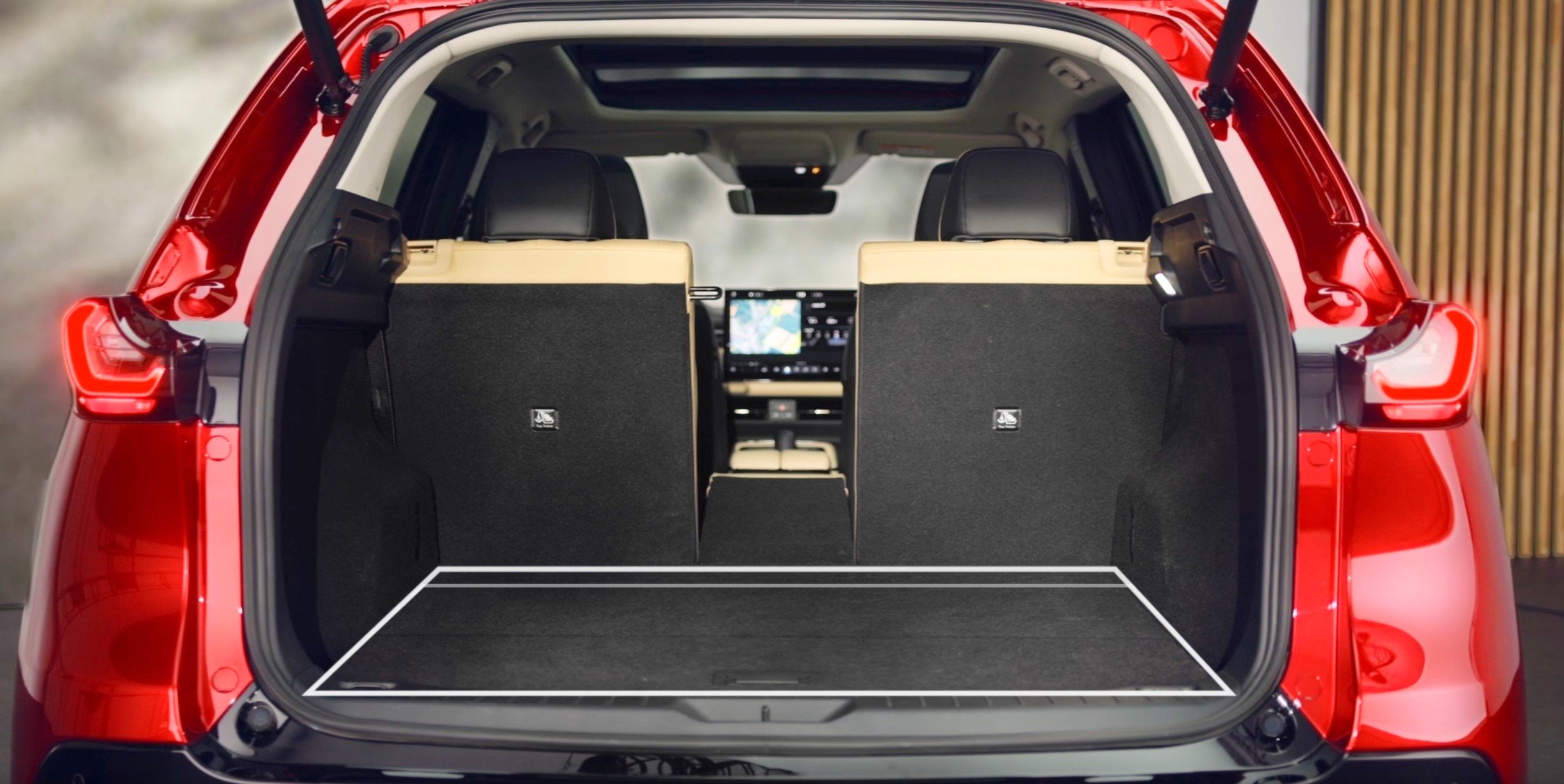
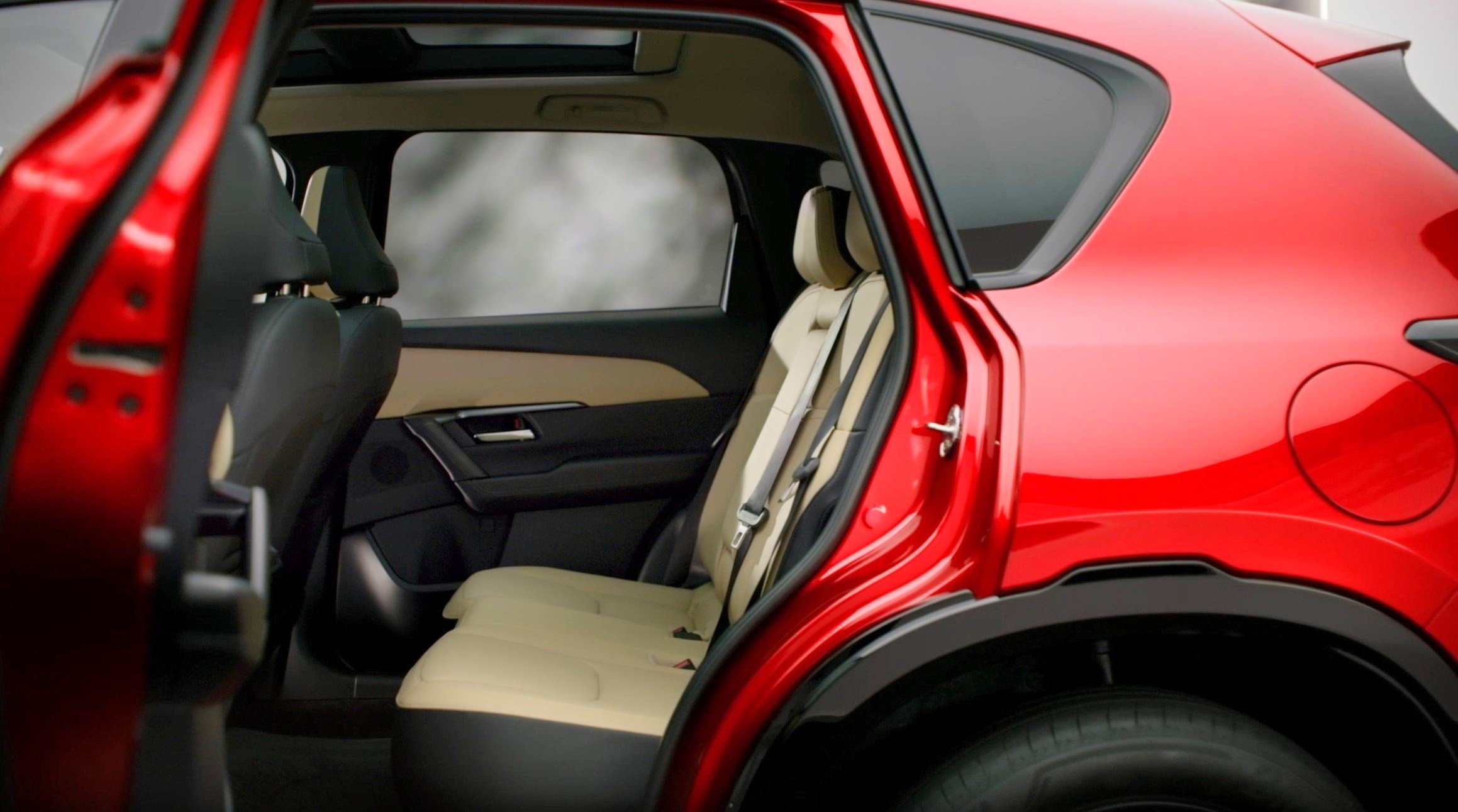
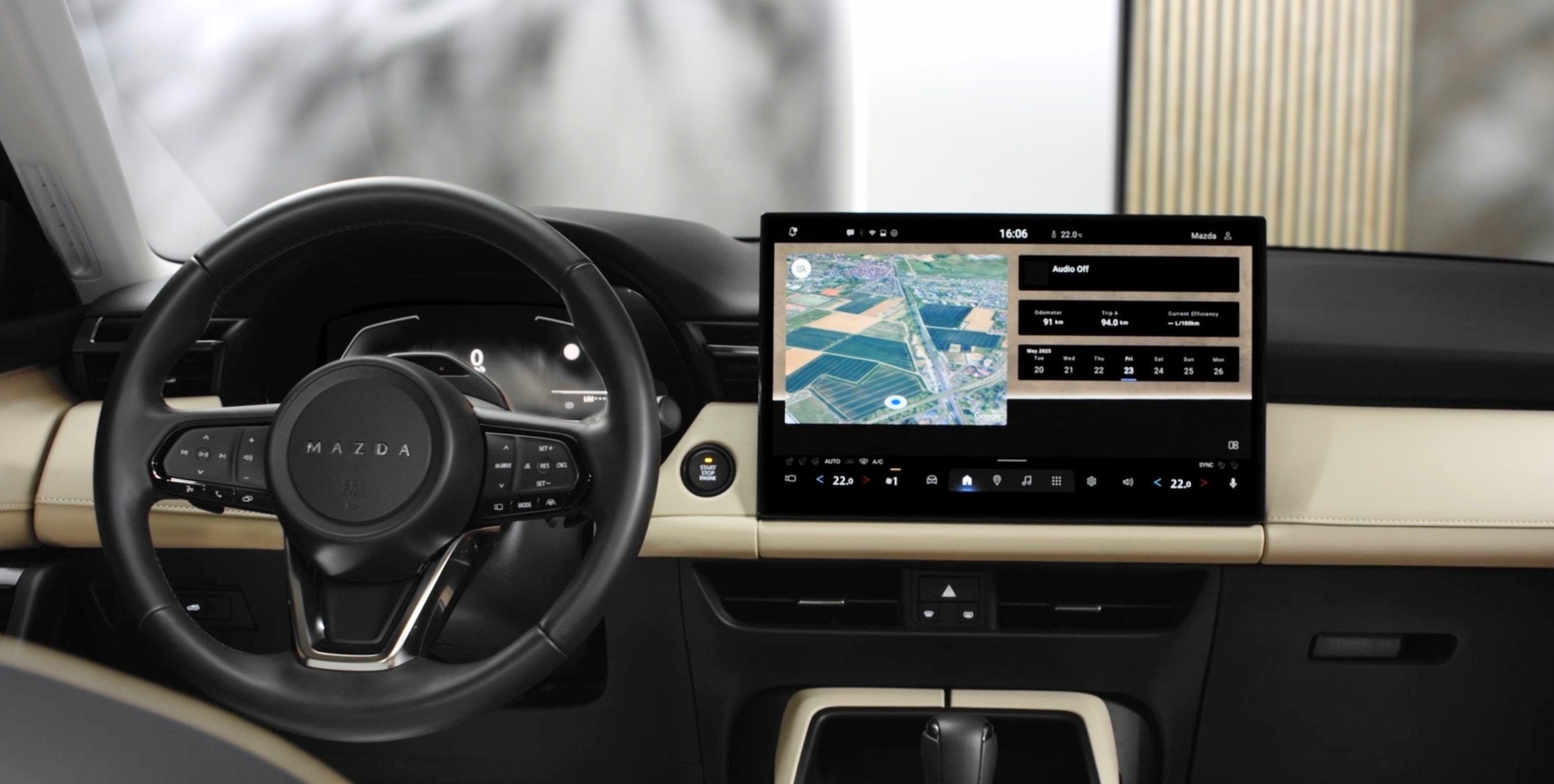






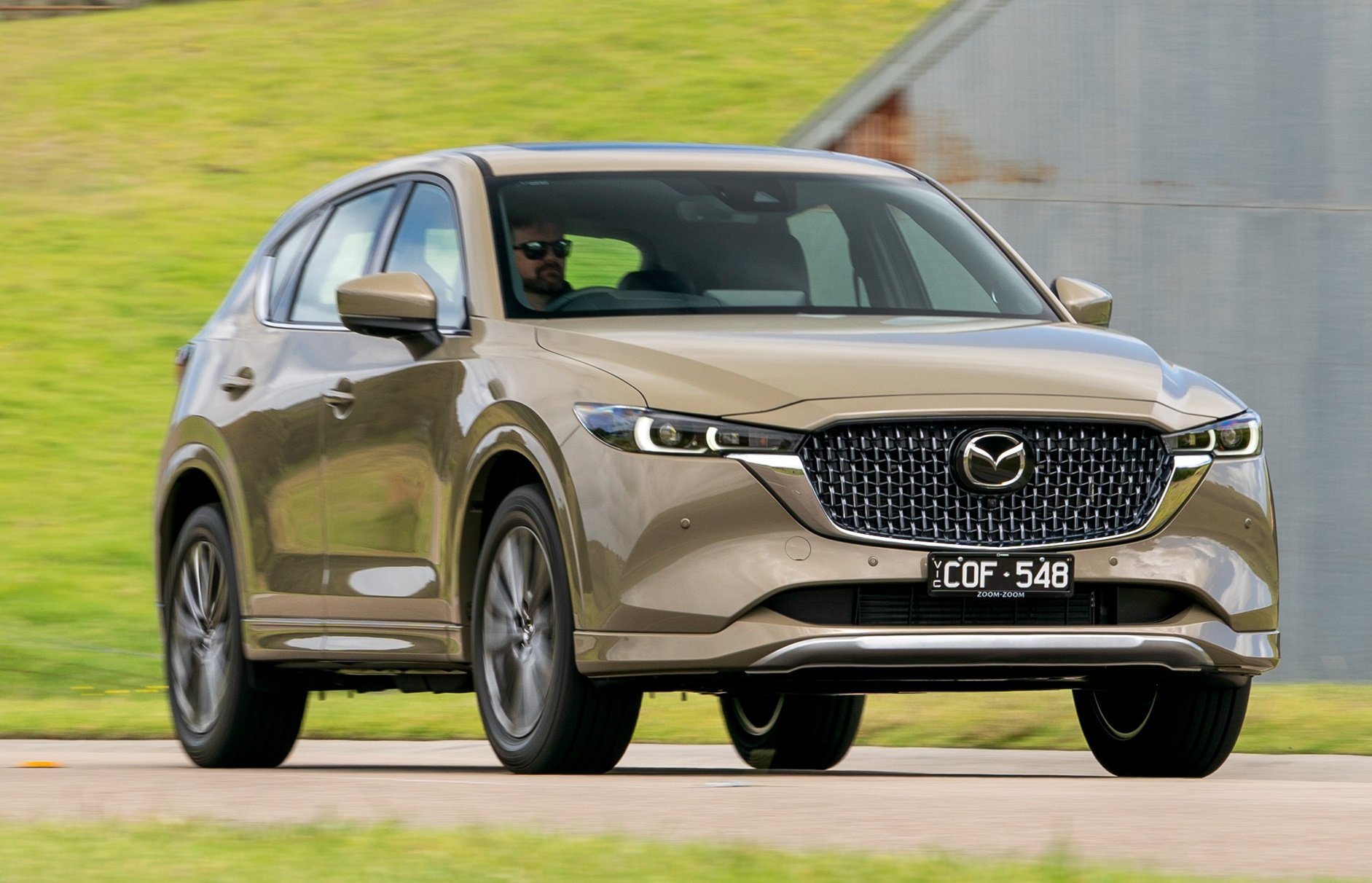



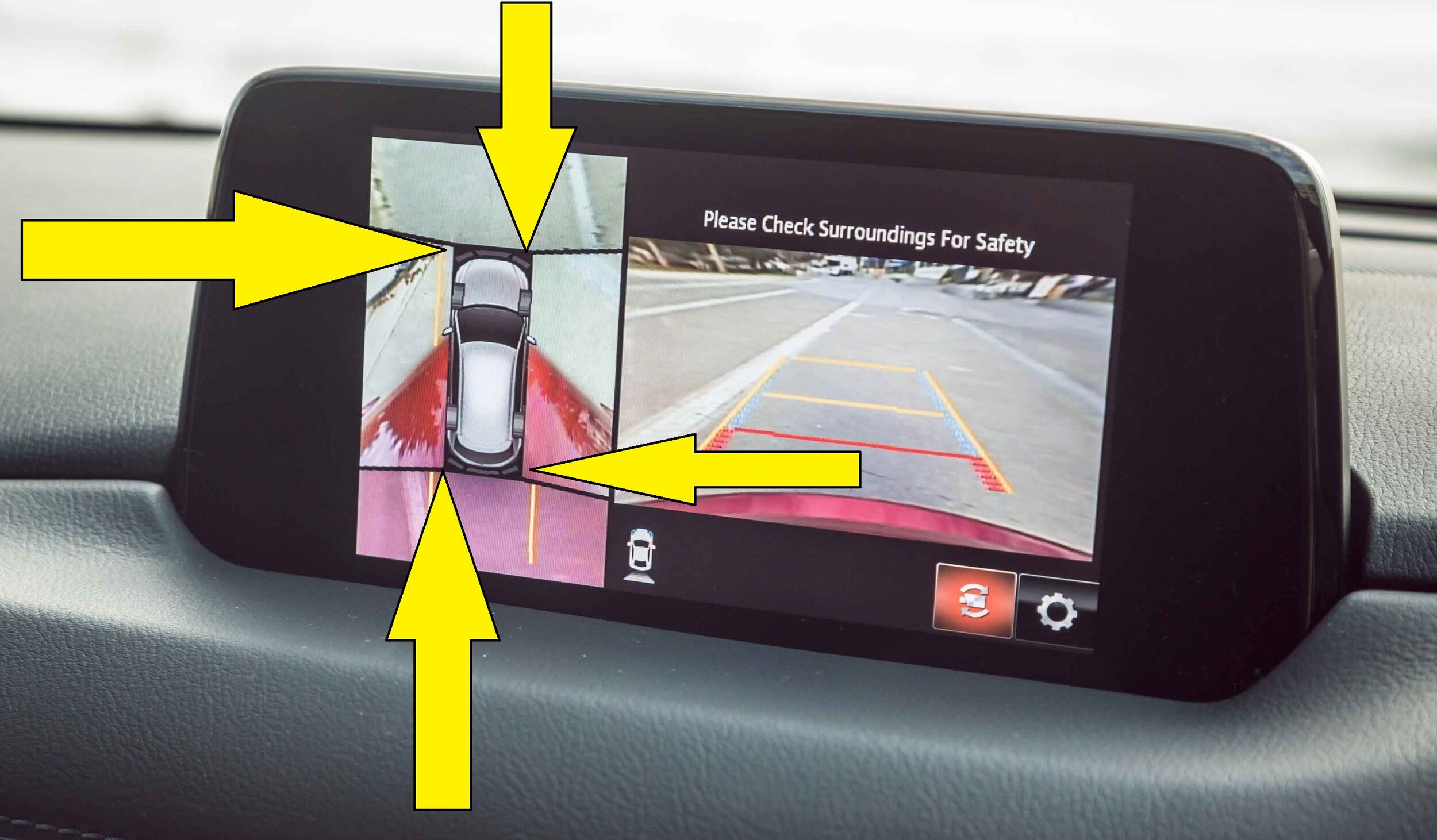




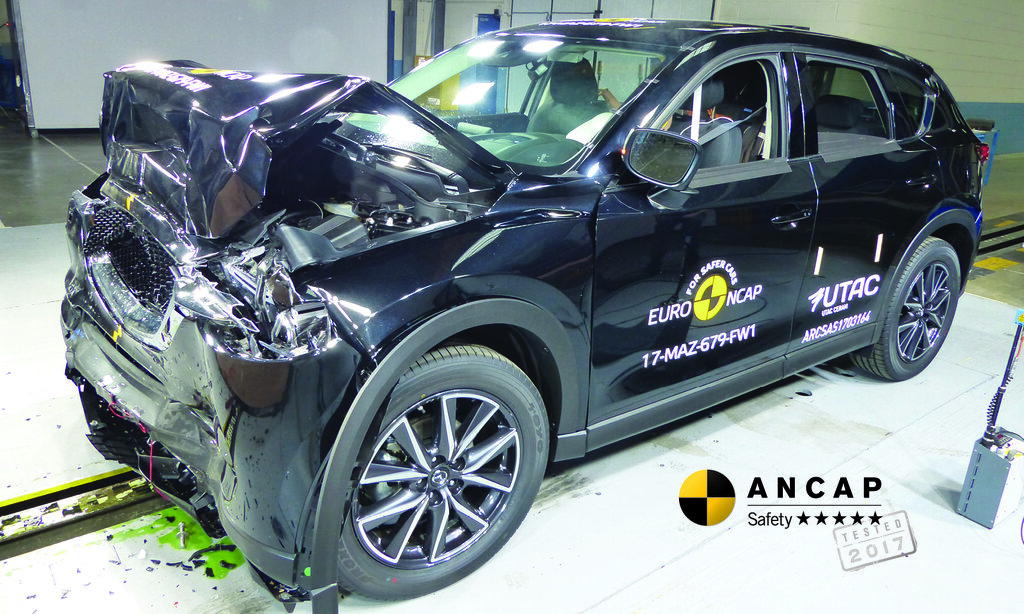


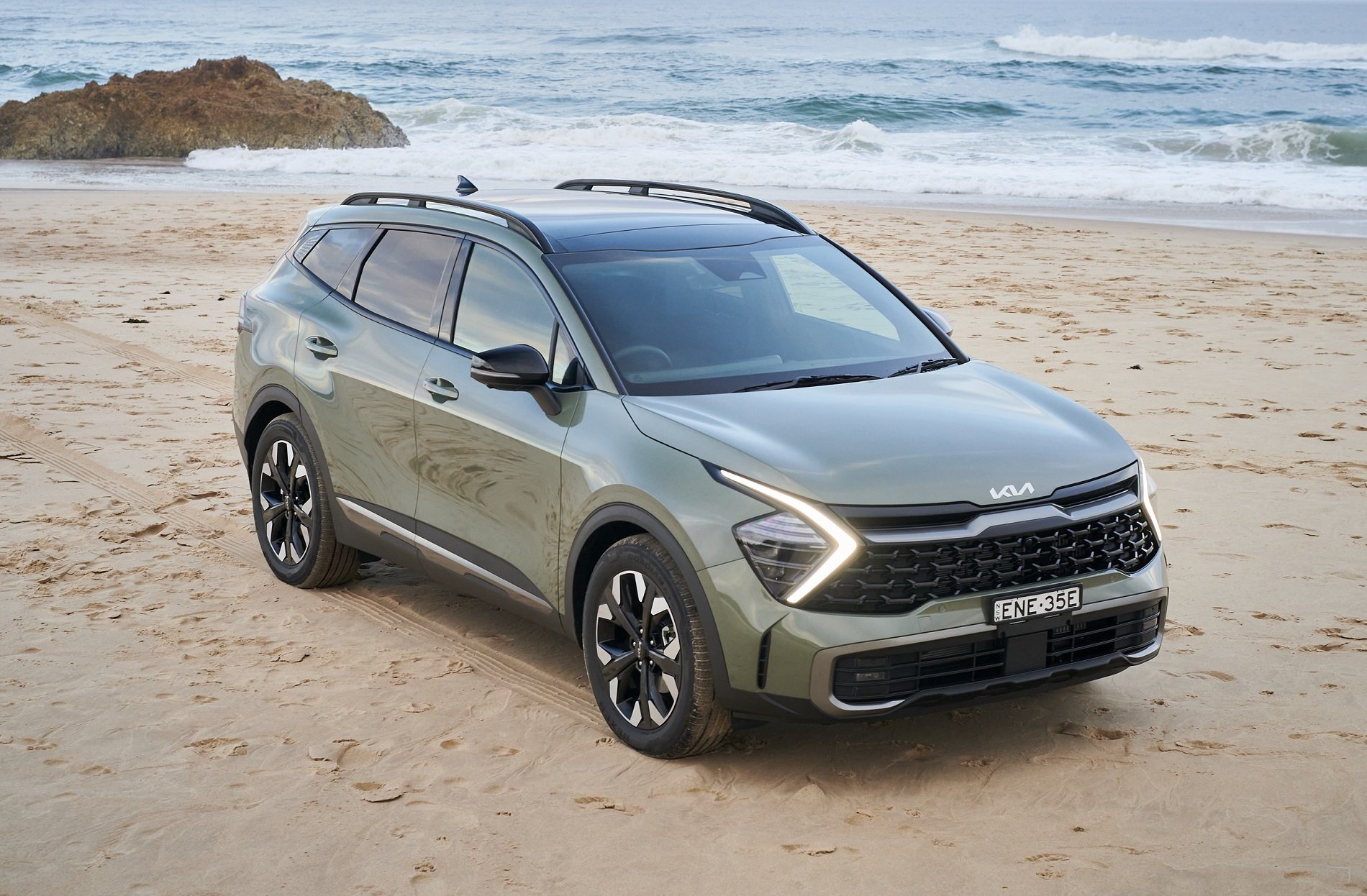

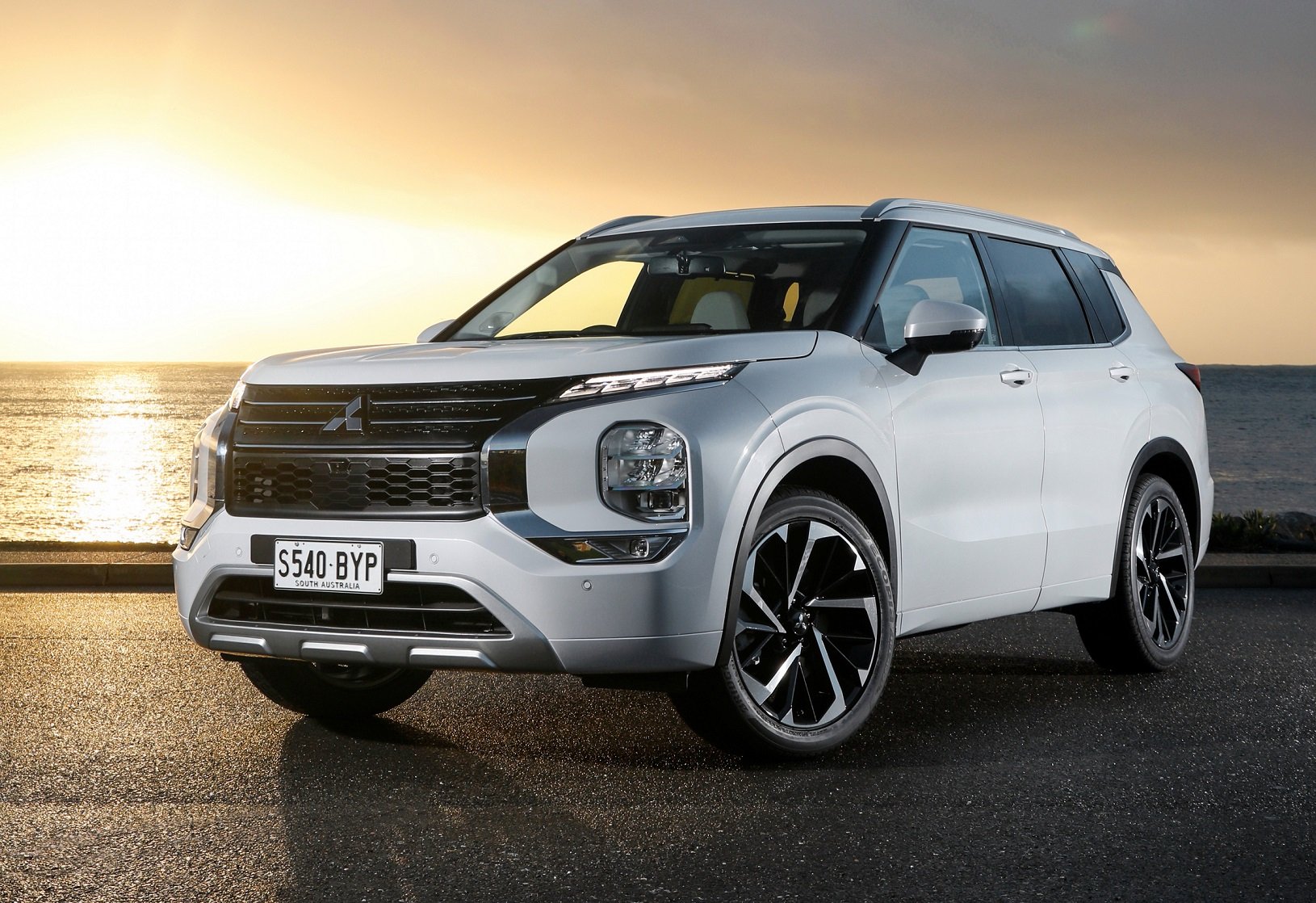

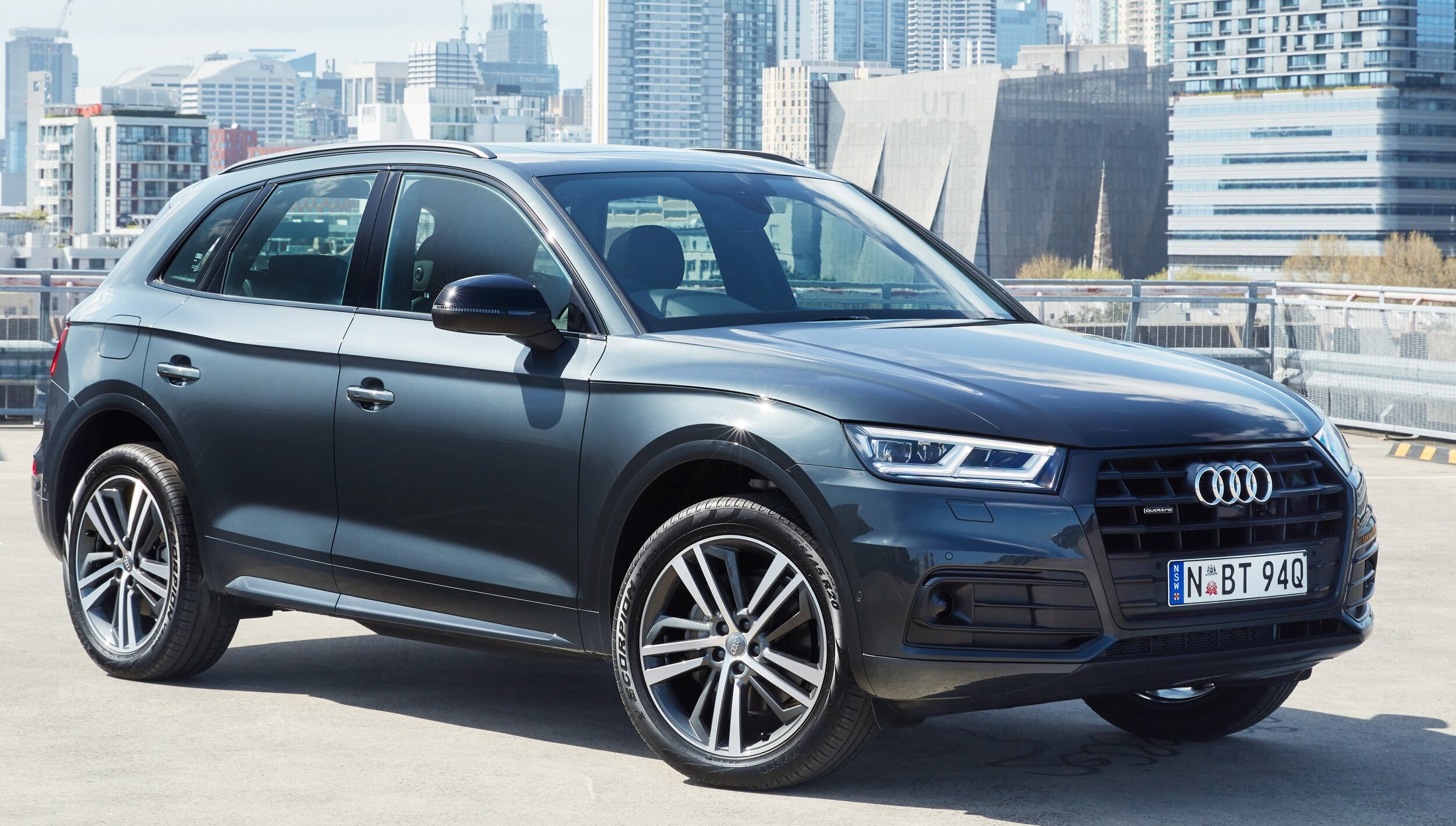
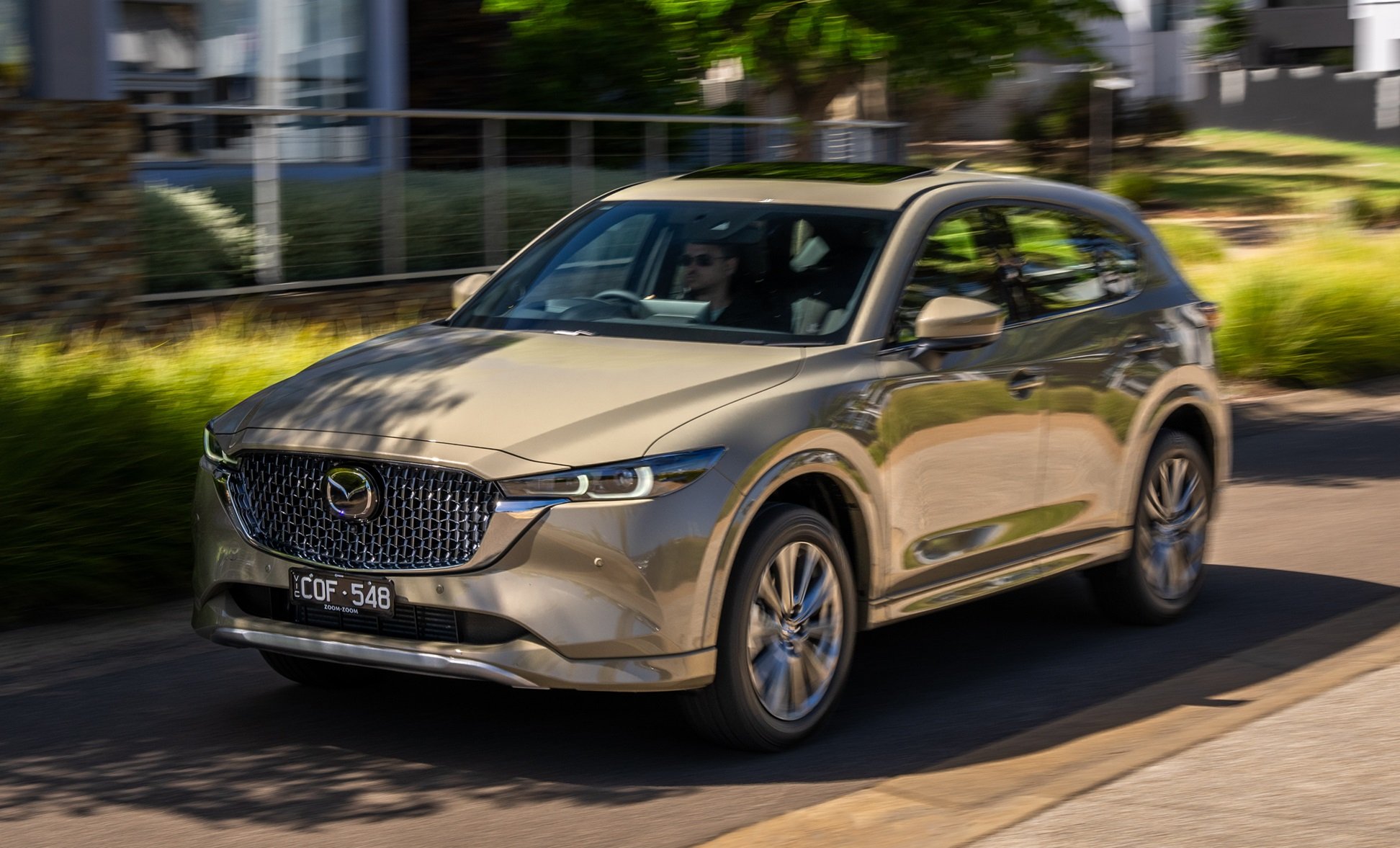


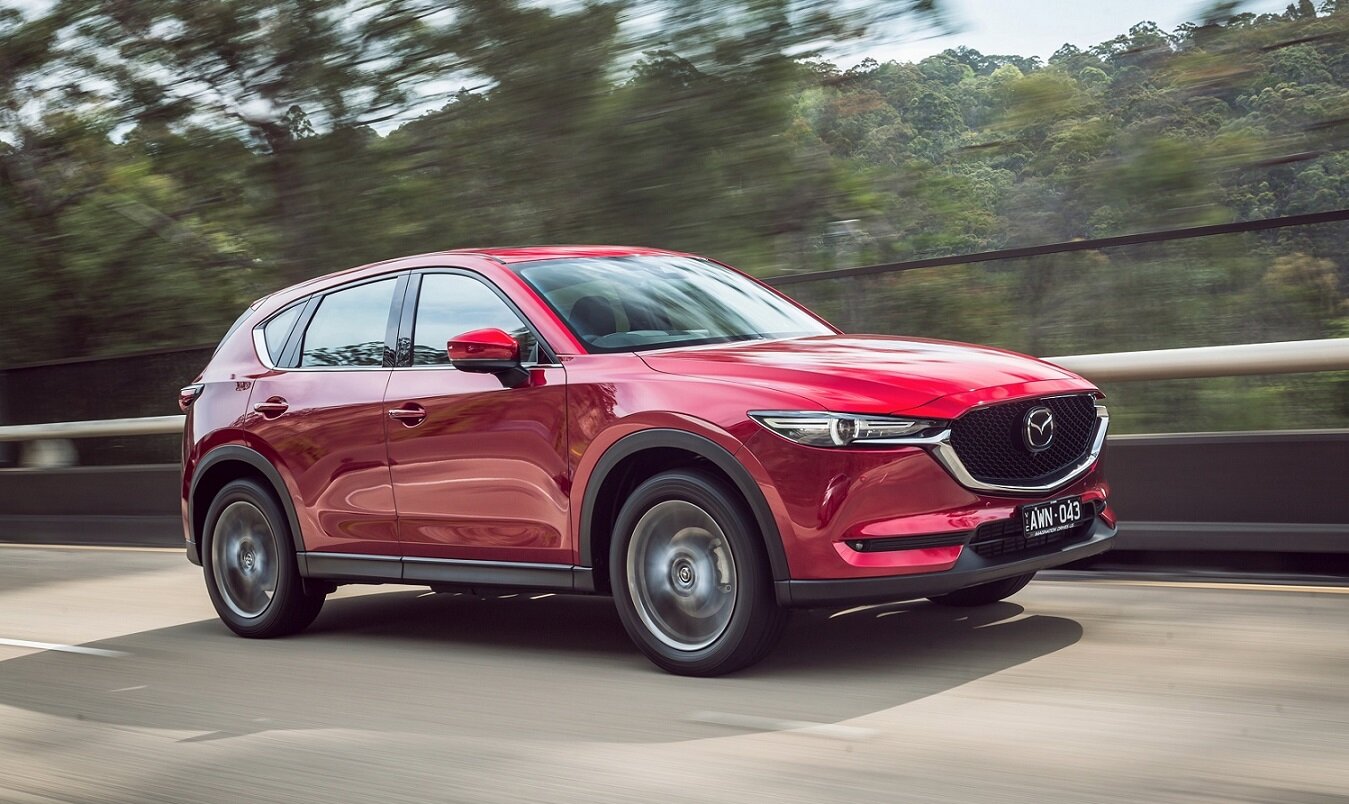












The Mitsubishi Outlander is an excellent-value seven-seat family vehicle with plenty of features and capability. It looks modern and tough, but you need to know if it’s going to be good enough compared with other medium SUVs.